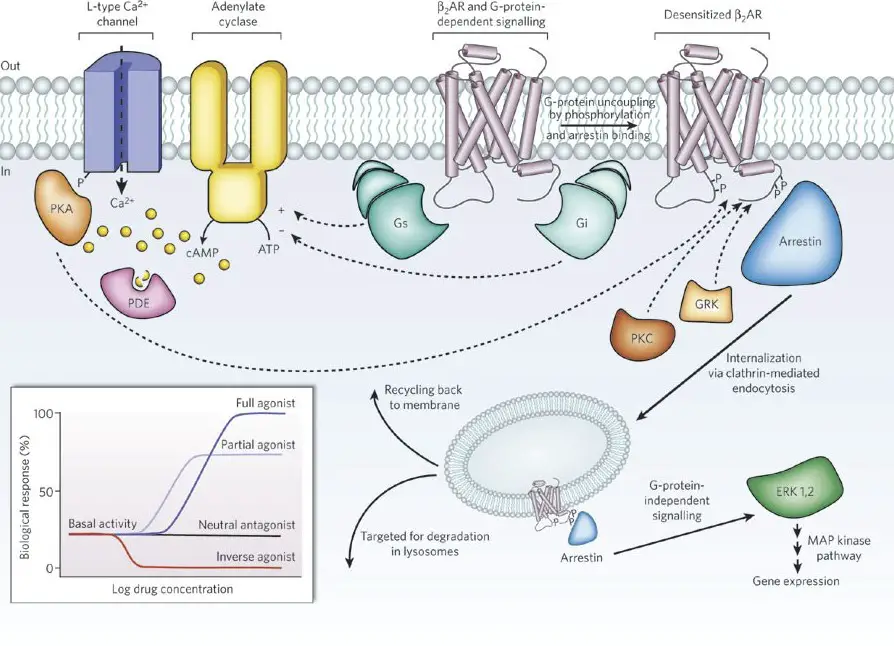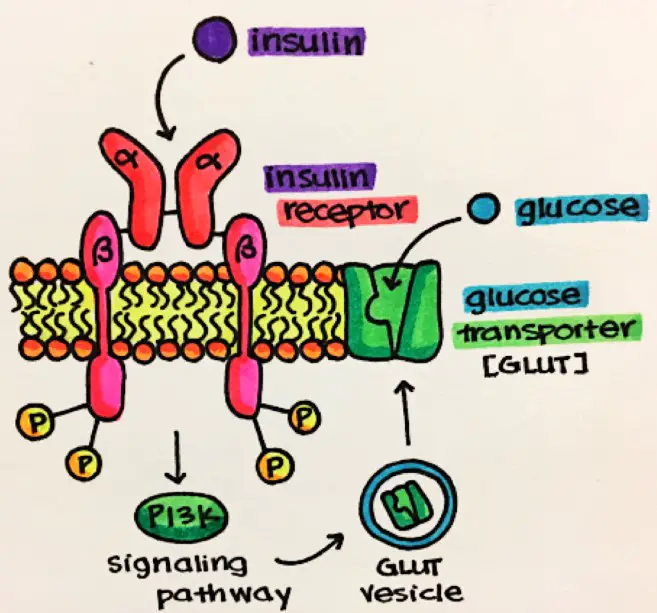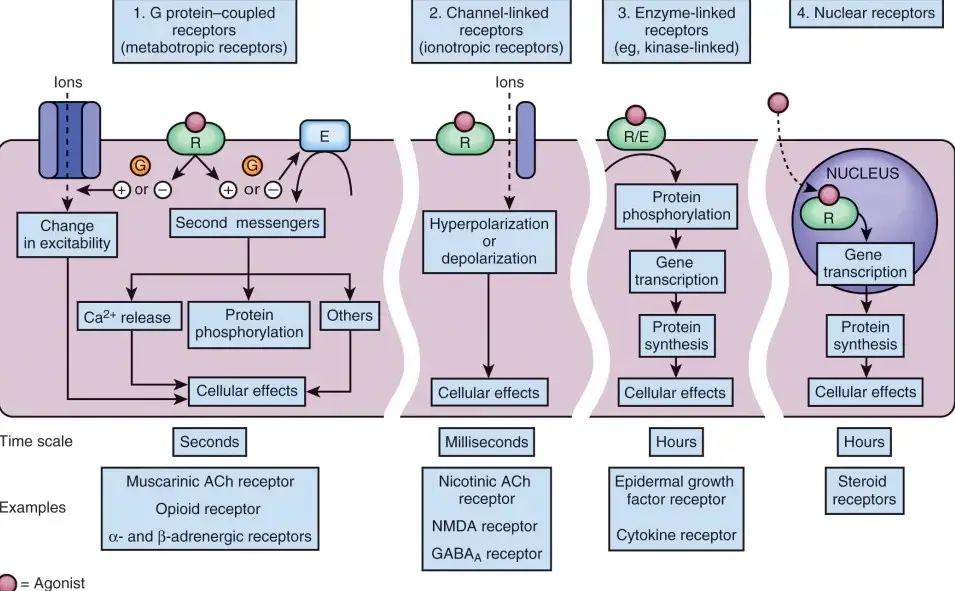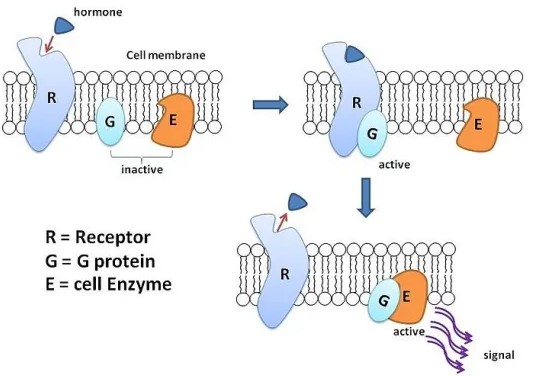G protein-coupled receptors and enzyme-linked receptors are two different types of receptors that allow cells to receive and respond to external signals. In this blog post, we will explore the differences between these two types of receptors, including their structure, location, and function. We will also discuss how they are involved in signal transduction pathways and how they can be targeted by drugs.
We will also discuss how they are involved in signal transduction pathways and how they can be targeted by drugs. Finally, we will look at some examples of diseases that involve these receptors.
How g protein-linked receptors function

G protein-linked receptors (GPLRs) are transmembrane proteins that detect and respond to external signals from hormones and other molecules. They are closely related to enzyme-linked receptors (ELRs), but there are some key differences in how they function.
In addition, GPLRs can respond to a wide range of stimuli, including hormones, neurotransmitters, and light, while ELRs are specific to particular molecules. Finally, while ELRs are usually found in the cytoplasm, GPLRs are located on the cell membrane and can detect external signals.
How enzyme-linked receptors function

Enzyme-linked receptors are a type of receptor that works in a slightly different way than G-protein linked receptors. These receptors are able to respond to a specific ligand and then trigger an enzymatic response in the cell.
The ligand binds to the receptor and causes it to change its shape, which then causes the enzyme to become activated. This enzyme is then able to interact with other molecules in the cell, triggering a cascade of reactions that can ultimately lead to a cellular response. The advantage of enzyme-linked receptors is that they are more efficient at triggering a cellular response than G-protein linked receptors, since the ligand binds directly to the receptor and does not need to be processed by a protein first.
However, because the receptor is directly coupled to the enzyme, it can be more difficult to control the response once it is triggered.
Differences between g protein-linked and enzyme-linked receptors

The difference between G protein-linked and enzyme-linked receptors lies in how they transmit signals to the inside of the cell. G protein-linked receptors, also known as GPCRs, are found in the membrane of the cell and are activated by extracellular messengers, such as hormones, neurotransmitters, and light.
When activated, these receptors bind to a G protein, which can then activate a second messenger such as cyclic AMP, ultimately resulting in a cellular response. Enzyme-linked receptors, on the other hand, are located on the surface of the cell and are activated by the binding of a ligand to the receptor. This binding then causes the receptor to change shape, activating an enzyme that is associated with the receptor.
This enzyme then activates a second messenger, leading to a cellular response. Ultimately, G protein-linked receptors are activated by extracellular messengers, while enzyme-linked receptors are activated by ligand binding.
Examples of g protein-linked and enzyme-linked receptors
G protein-coupled receptors and enzyme-linked receptors are two types of receptors that play an essential role in cellular communication. G protein-coupled receptors are activated by extracellular ligands such as hormones, neurotransmitters, and other messenger molecules. When activated, they activate a G protein, which in turn activates an effector protein that produces a cellular response.
Enzyme-linked receptors, on the other hand, are activated by intracellular ligands such as growth factors, cytokines, and other proteins. When activated, they activate enzymes that lead to a cellular response.
The main difference between these two types of receptors is that g protein-coupled receptors are activated by extracellular ligands, while enzyme-linked receptors are activated by intracellular ligands.
Clinical applications of g protein-linked and enzyme-linked receptors
G protein-linked and enzyme-linked receptors play an important role in the regulation of many physiological and cellular processes. Understanding the difference between the two can help to better understand how they interact with various drugs and hormones and how they affect different body systems.
G protein-linked receptors are proteins that are activated by hormones or neurotransmitters and can activate intracellular second messenger systems. Enzyme-linked receptors, on the other hand, are receptors that are activated by hormones or neurotransmitters and can activate enzymatic pathways within the cell. This difference is important in the context of clinical applications because drugs and hormones can interact with either type of receptor to produce different effects.
For example, some drugs can activate G protein-linked receptors to produce a specific effect, while other drugs can activate enzyme-linked receptors to produce a different effect. Understanding the difference between the two types of receptors can help to better understand how they interact with drugs and hormones and how they can be used to treat various medical conditions.
Final Touch
In conclusion, G protein-linked receptors and enzyme-linked receptors are two different types of receptors that allow cells to respond to different stimuli. G protein-linked receptors are activated by the binding of a ligand to the receptor, which in turn activates a G protein that triggers a signaling cascade.
Both types of receptors are essential for cell communication and response to stimuli. While the mechanisms of action are slightly different, both types of receptors are involved in the same general process of signal transduction.

